I have to admit that part of the reason I set up this web site was that vets did not seem to be
interested in the practical benefit of such a simple piece of equipment. There is even greater
frustration that, even though I have supplied and shown them how to use it, many of the local
farriers will not do so when trimming horses with chronic laminitis.
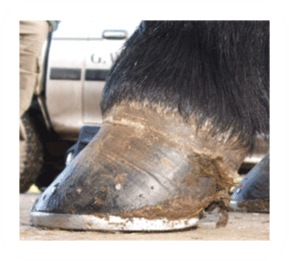
Both of these chronic founder feet were trimmed by the farrier less than one week before!
I really believe that it could be of great benefit to these and many other laminitics. (See How do we trim the chronic founder foot?
I decided that if owners of laminitic horses and ponies could buy or make it then perhaps they would bring it to the attention of their vet and farrier.
It is made from a piece of thin Perspex (or Plexiglas) and has three lines drawn on it at 30° , 45° and 55° as indicated on the picture.
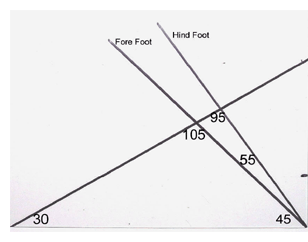
(See Strassers Plastic Sheet)
It is not just in laminitic feet that I have found it useful.
We examine the foot generally when standing looking down on it or the solar surface by picking it up but we generally find it more difficult to look at it from the side. In the conditions that I examine horses, I am not prepared to lie down in the mud to examine the foot laterally so, as well as lifting the foot and look at it from the side, I often take photographs of the foot with the camera on the ground. Likewise I will use the plastic sheet to judge angles and deformities either by lifting the foot up, hold the sheet against it and twist my body to look at it, bending down and holding it against the foot if standing on concrete or by making measurements from the photographs.
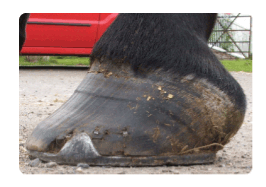
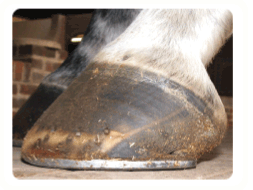
I use the plastic sheet to identify deformities or distortions of the hoof.
- Deviation or flaring of the dorsal hoof wall.
- Distortion of the line of the lateral coronet.
- Estimating the angle of the dorsal hoof wall compared to the angle of the heel.
- Observing how the horse stands in relation to the angle of the dorsal wall and how you can change it by trimming.
- And not related to the angles, as a straight edge to show medial / lateral imbalances.
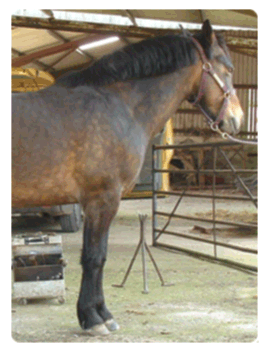
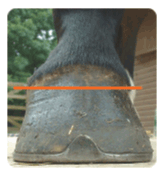
Having identified a distortion or deformity, I do not then say that the foot has to be trimmed in a certain way. I try to see if the horse's stance or action also indicates an abnormality and then I will try to discuss it directly with the farrier explaining my point of view and hopefully I will be able to persuade him to make some alterations to the trimming of the feet.
I have had some dramatic successes, but then I have also had the occasional failure, making the horse more lame.
I do find it extremely useful to have serial photographs of the feet shape and I would strongly recommend others to do so, however it does take up a lot of time. (400+ horses average 10 photos per horse and I have 4000 photographs of horses' feet!).
I would be thrilled if others acquired a plastic sheet and used it to confirm or refute some of my (and Dr Strasser's) theories.